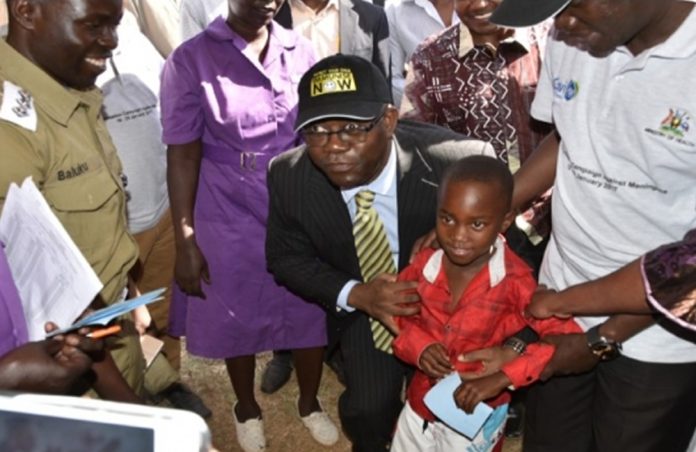Meningitis means “inflammation of the meninges”, the lining of the brain. However we will use the term only for infections of the meninges.
As any agent can, in theory, infect the lining of the brain, there are hundreds of different causes. We will consider only common causes.
- Viruses
Most viruses infect the meninges, and therefore meningitis is part of most childhood diseases – mumps, measles and chicken pox, all cause a short lived meningitis, hence the headache and photophobia. This is not at all important as it gets better on its own. In Aids patients there can be severe viral meningitis. There are a number of viruses which cause meningitis in people with normal immune systems. Thankfully we hardly ever see them in Uganda. - Bacteria
- Pneumococcal meningitis This is due to the ordinary streptococcus that causes pneumonia. It usually affects children and young adults, and usually follows untreated pneumonia. I’ve never seen it in Kampala, but I do know of young adults who have died from meningitis because their pneumonia was diagnosed as malaria, and proper treatment was delayed. Upcountry hospitals will see a few each month
- E. coli This and other gut bacteria commonly cause meningitis in new-borns and babies. I’ve never seen a case in Uganda. These germs can also cause meningitis in people who have been catheterised. So this can be prevented by proper sterile procedures.
- Haemophilus This bacterium commonly causes sore throats and ear infections. However a nasty strain called type B can cause a very serious type of sore throat called epiglotitis and meningitis. It affects an average about 1 in 500- 1,000 children so a paediatrician in a large district hospital will see about 3 a month yet a G.P with 3,000 patients will see 1 every 10 years. There is now a vaccine, Haemophilus influenza type B or HiB. All children should now be vaccinated, and we should therefore never see it again.
- Meningococcus This is a neisseria, a cousin of gonorrhoea. It usually comes in epidemics across the African “meningitis belt” every 15 years. We had an epidemic in Karamoja in 1986, so we are due for another. It causes sporadic outbreaks in schools and universities in Europe. During an epidemic everyone who has not had it before will get infected. 95% will have a mild unnoticed sore throat infection and will become immune for life. Only 1 in 20 will get meningitis. It attacks very quickly. Fever and headache in the morning, stiff neck at mid-day and some will be dead within 12 hours. In Karamoja we had 87 cases in our mud and grass thatch clinic and 5 died, all within 3 hours of admission. The answer is early treatment, and G.P’s in the UK are encouraged to give IV penicillin to anyone suspected, not risk the 1 hour delay in going to hospital and getting a lumbar puncture. A very unfortunate few get meninococcal septicaemia. They are the ones who get the classic little purple bleeding point rash and collapse. They can be dead within 4 hours of symptoms, before they get a stiff neck.
- TB meningitis is a common cause of death in Aids patients. It is very rare in other people.
- Yeast & Fungi.
Aids patients get meningitis from a yeast called cryptococcus and from candida. It cannot affect people with a normal immune system.
What about Kampala
Most cases of meningitis are Aids related:- TB, bacteria or yeast. We see maybe 1 case in non-HIV infected patients every 2 or 3 years, it really is very rare.
The epidemic type, meningococcus, doesn’t seem to occur in Kampala. The classic “meningitis belt” climate is hot and dry, so why it occurred in Cardiff I don’t know! There may be sporadic cases in other areas of Uganda, but no epidemics.
Vaccines
There is a vaccine against HiB and pneumococcus. The meningococcus story is more complicated. There are 3 types, cunningly named type A, type B and type C. There is a vaccine against A & C. The sporadic cases in UK were due to type A, so children were given vaccine from age 3 months. The immune response is poor before age 2, but it does no harm at all. So to give type A & C to children of 3 months is fine, but repeat at age 2.
Does it do any good?
HiB – yes. All children should be vaccinated.
Pneumococcus is too rare to worry about. We vaccinate only the elderly.
Meningococcus is debatable. We don’t see it in Kampala, so we don’t know what strain it is. In Karamoja we gave A & C to hundreds of thousands of people, and it made no difference at all. As many people got it in the vaccinated and non-vaccinated population. Either it was type B or the vaccine failed.
The best that can be said is it is harmless, will protect against A from 3 months of age and C from 2 years, and therefore can be given to any child whose parents want it.
Summary
The best protection against meningitis is proper diagnosis and treatment. If a child is very ill with fever and stiff neck or photophobia get to a doctor immediately. Immunize all children against HiB, give A & C to those who want it. All children from the UK should get A&C; as we know the strain there is type A.










